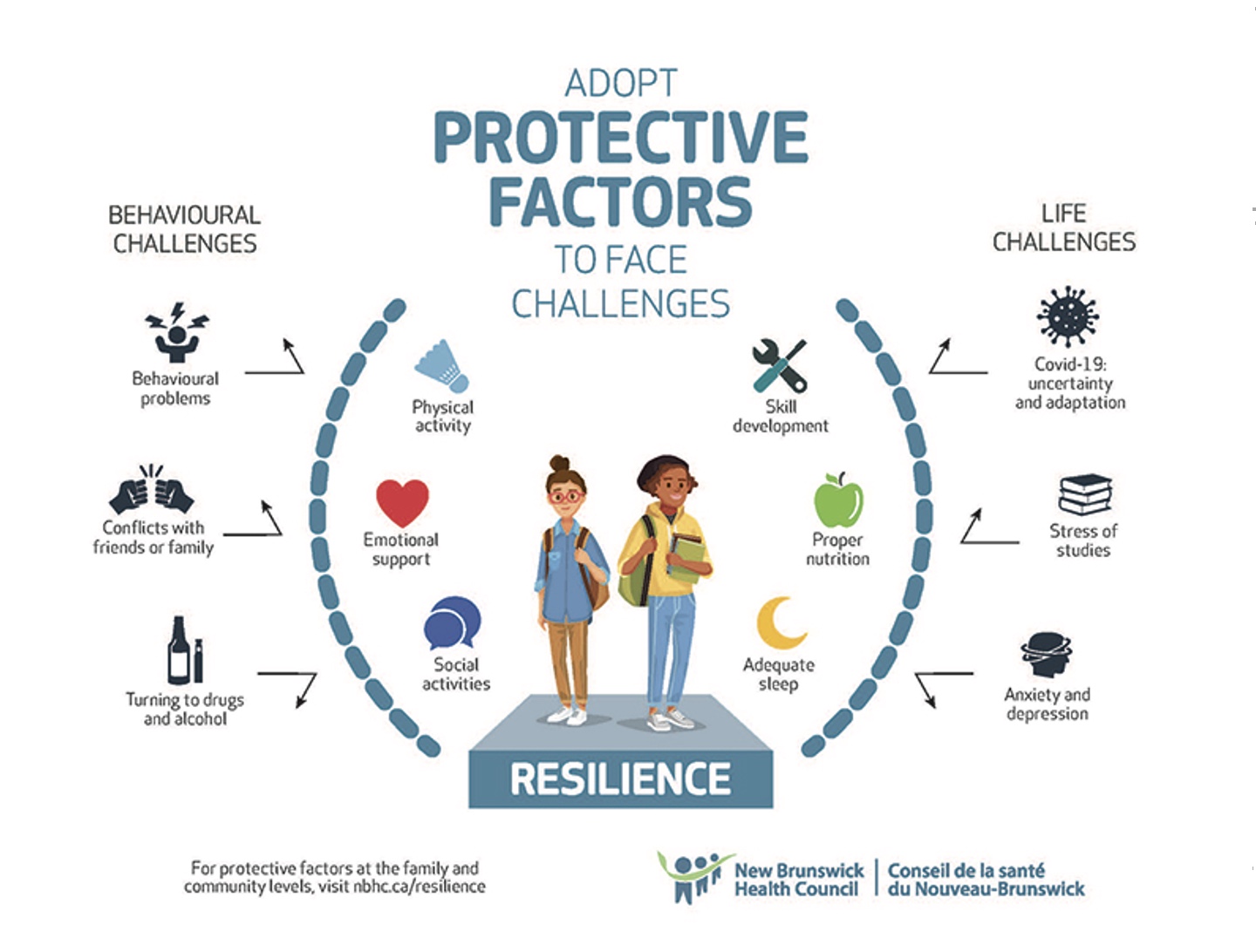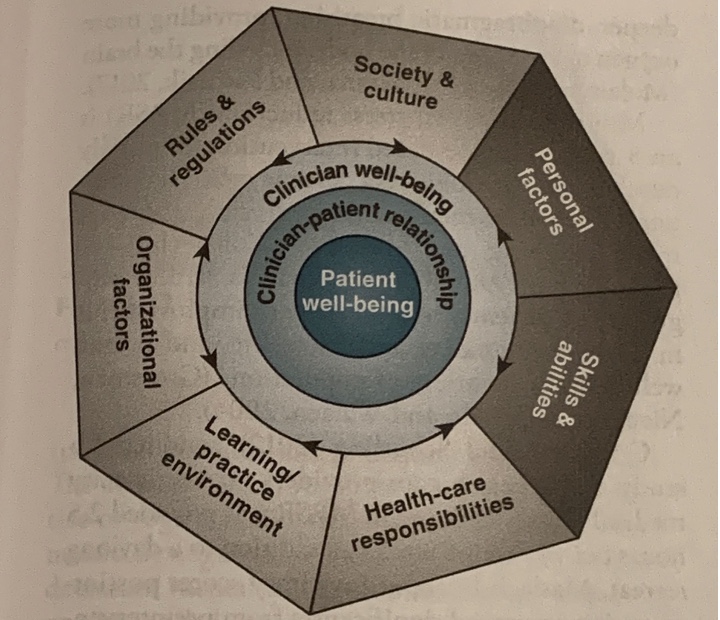Week 7 Presentation: Health Professional Well-Being
1/42
There's no tags or description
Looks like no tags are added yet.
Name | Mastery | Learn | Test | Matching | Spaced |
|---|
No study sessions yet.
43 Terms
Burnout
A psychological syndrome that involves a prolonged response to chronic interpersonal stressors on the job that results in feelings of being over-extended and depleted of one’s emotional and physical resources
Emotional exhaustion
Depersonalization
Cynicism
Reduced sense of personal accomplishments
Transaction between the characteristics of the work environment and the characteristics of the health care worker
The cumulative stress of the job overcomes the person’s ability to cope and problem-solve effectively
Emotional Exhaustion
Feeling overextended and overwhelmed by work demands
Negatively affects the quality and safety of healthcare delivery
Medical error, health-care associated infections
Higher health-care costs due to staff turnover and lower job productivity
Significant personal suffering for health-care providers
Broken relationships, alcohol and substance abuse, depression, suicide
Don’t have the empathy and compassion to treat patients
Depersonalization
Detachment
Indifference
Cynicism
An inclination to believe that people are motivated purely by self-interest
Skepticism
Reduced Sense of Personal Accomplishments
Feelings of inadequacy, perceptions of failure, decreased confidence
Total Worker Health Program
Policies, programs and practices that integrate protection from work-related safety and health hazards with promotion of injury and illness prevention efforts to advance worker well-being
Developed by the National Institute for Occupational Safety and Health
Through our national government
Issues Relevant to Advancing Worker Well-Being Through Total Worker Health
Control of hazards and exposures
Organization of work
Built environment supports
Leadership
Compensation and benefits
Community supports
Changing workforce demographics
Policy issues
New employment patterns
Control of Hazards and Exposures
Chemicals
Physical agents
Biological agents
Psychosocial factors
Human factors
Risk assessment and risk management
Organization of Work
Fatigue and stress prevention
Work intensification prevention
Safe staffing
Overtime management
Healthier shift work
Reduction of risks from long work hours
Flexible work arrangements
Adequate meal and rest breaks
Built Environment Supports
Healthy air quality
Access to healthy, affordable food options
Safe and clean restroom facilities
Safe, clean and equipped eating facilities
Safe access to the workspace
Environments designed to accommodate worker diversity
Leadership
Shared commitment to safety, health, and well-being
Supportive managers, supervisors, and executives
Responsible business decision-making
Meaningful work and engagement
Worker recognition and respect
Compensation and Benefits
Adequate wages and prevention of wage theft
Equitable performance appraisals and promotion
Work-life programs
Paid time off (sick, vacation, caregiving)
Disability insurance (short & long-term)
Workers’ compensation benefits
Affordable, comprehensive healthcare and life insurance
Prevention of cost shifting between payers (workers’ compensation, health insurance)
Retirement planning and benefits
Chronic disease prevention and disease management
Access to confidential, quality healthcare services
Career and skills development
Community Supports
Healthy community design
Safe, healthy and affordable housing options
Safe and clean environment (air and water quality, noise levels, tobacco-free policies)
Access to safe green spaces and non-motorized pathways
Access to affordable, quality healthcare and well-being resources
Changing Workforce Demographics
Multigenerational and diverse workforce
Aging workforce and older workers
Vulnerable worker populations
Works with disabilities
Occupational health disparities
Increasing number of small employers
Policy Issues
Health information privacy
Reasonable accommodations
Return-to-work
Equal employment opportunity
Family and medical leave
Elimination of bullying, violence, harassment, and discrimination
Prevention of stressful job monitoring practices
Worker-center organizational policies
Promoting productive aging
New Employment Patterns
Contracting and subcontracting
Precarious and contingent employment
Multi-employer worksites
Organizational restructuring, downsizing, and mergers
Financial and job security
Injuries
Prevention of injuries
Overexertion and bodily reaction
Slips, trips, falls
Contact with objects
Transportation incidents (higher on list than others- home health)
Violence (working with TBI, aggressive children, home health)
Exposure to substances (hospital setting)
Nearly 69% of OT’s are at risk for injuries, with musculoskeletal injury a common risk
Body mechanics to prevent injuries
Infectious Diseases
Prevention
Education and appropriate use of safety supplies and equipment
Consistently reporting and reviewing data on infection rates at the institution, community, state, national, global levels
Hand hygiene
Secondary prevention- containment to avoid transmitting the infection
Workers have the right to
Working conditions that do not pose a risk of serious harm
Receive information and training about hazards, prevention, and OSHA (occupational safety and health association)
Review records of work-related injuries and illness
File a complaint with OSHA
Exercise rights under law without retaliation
Stress
Exposure to infectious diseases
Productivity demands
Insufficient staffing
Role ambiguity
Knowing who needs to do what
Complex authorization
Management system
Ethical dilemmas
Moral distress
Moral Distress
Tension that arises when a practitioner is unsure of the best course of action to take or encounters a barrier that prohibits doing what is known to be right
Being expected to obtain as many billable units as possible per client regardless of individual client needs
Being unable to provide optimal therapy because of limited insurance coverage
Being expected to treat and/or documentation for more clients than time allows
Stress Risk-Reduction Strategies: Organizational Change Interventions Examples
Address work-related stressors such as inadequate work space, unreasonable workload, lack of readily available resources, inadequate and unsafe equipment
Recognize and take action on legitimate concerns regarding overbearing physicians and supervisors
Establish employee assistance programs and organizational change programs
Provide greater flexibility with job assignment, hours, alternative job arrangements
Develop and implement training for supervisors on techniques to reduce worker stress
Stress Risk-Reduction Strategies: Stress Management Interventions
Educate employees about job stress
Establish and maintain stress management programs
Provide readily available counseling from a nonjudgemental source
Provide group therapy for specific job-related stressors
Use of relaxation exercises and biofeedback until stress source is lifted
Improving the Well-Being of Health-Care Professionals: Resilience
Protective against compassion fatigue
Can be learned
Mutual trust and connectedness to colleagues has a significant impact on resilience and protects against burnout
A resilient health-care professional has the ability to maintain personal and professional well-being in the face of ongoing work stress and adversity
Resilience Protective Factors (Can All be Learned)
Supportive relationships
Healthy coping strategies
A sense of purpose
Positive parenting by caring adults
Emotional self-awareness
Safe environments and stable finances
The willingness to seek help
Problem-solving skills
Protective Factors to Face Challenges

Compassion Fatigue
An emotional state with negative psychological and physical consequences that emanate from acute or prolonged caregiving of people stricken by intense trauma, suffering, or misfortune
A direct result of a caregiver ignoring the symptoms of personal stress combined with inattention to personal emotions over time
Attacks the OT’s empathy and ability to show compassion
Very important to address these symptoms of personal stress
1st Stage of Burnout
A compulsion to prove oneself
2nd Stage of Burnout
Working harder to meet one’s own high expectations
3rd Stage of Burnout
Neglecting basic personal self-care needs
4th Stage of Burnout
Displacement and the inability to recognize and deal with the source of one’s distress
5th Stage of Burnout
Revision of values and the dismissal of once-important relationships and activities
6th Stage of Burnout
Denial of emerging problems
Intolerance
Cynicism
Aggression
7th Stage of Burnout
Withdrawal
Isolation
loss of hope or direction
Escape through alcohol or drug use
8th Stage of Burnout
Behavioral changes obvious to family and friends
Increasing feelings of worthlessness
9th Stage of Burnout
Depersonalization
A loss of emotional connectedness to self and others
10th Stage of Burnout
Pervasive feeling of inner emptiness that may lead to addictive behaviors, such as gambling, overeating, compulsive sexual behavior, and drug and alcohol abuse
11th Stage of Burnout
Depression
Loss of meaning
Apathy
Hopelessness
12th Stage of Burnout
Burnout
Total mental and physical collapse
Potential for suicide
A need for immediate medical and psychological attention
Clinician Well-Being Model
Relationship between patient, clinician, and the complex interaction of factors that affect professional well-being and thereby have an impact on patient care

Prevention: Microsystem (Individual)
Care for your mind/body/spirit
Engage in behaviors that increase energy, lower stress, and contribute to health and well-being
Sleep, nutrition, physical activity, social support
Active coping
Mindfulness
Yoga
Gratitude
Self-compassion
Prevention: Mesosystem- Worksite/Organizational
Programs, policies, benefits, environmental supports, and links to the surrounding community designed to meet the health and safety needs of all employees
Target interventions to each specific workgroup based on needs
Cultivating community at work
Promoting flexibility and work-life integration
Providing resources to promote professional self-care and resilience
Prevention: Macrosystem
Federal and state agencies, legislatures, accreditation organization, third-party payers, etc.
Productivity expectations, certification requirements, quality metrics, documentation requirements, electronic health records
Compassion Fatigue Symptoms
Trouble sleeping/exhaustion
Increased emotional reactivity/hypersensitivity to emotional material
Hypervigilance or heightened sensitivity to potential threats to self
Become reactive when something comes at you that is too much
Diminished interest to feel empathy
Anger and irritability
Absenteeism (work, family, social) or poor work skills
Difficulty separating work life from personal life
Emotional exhaustion